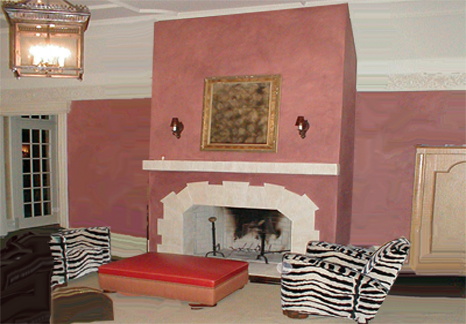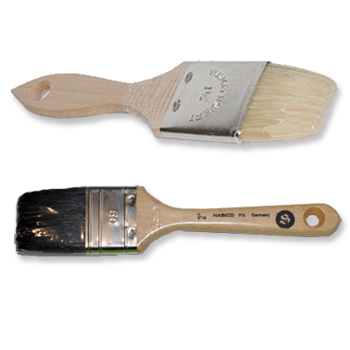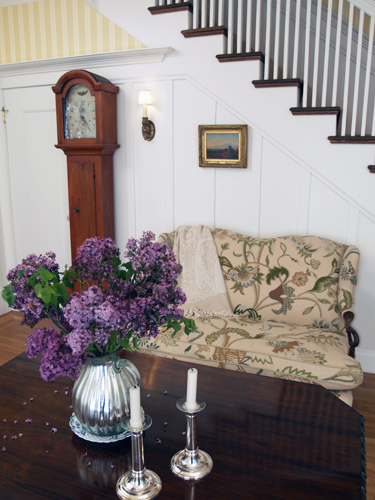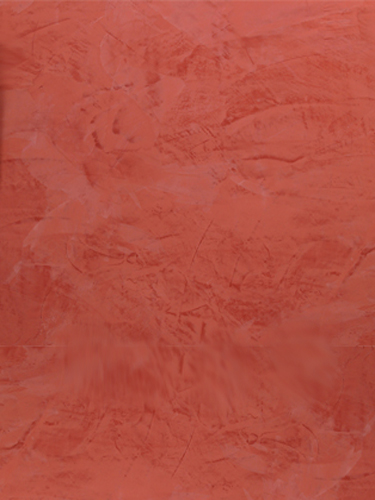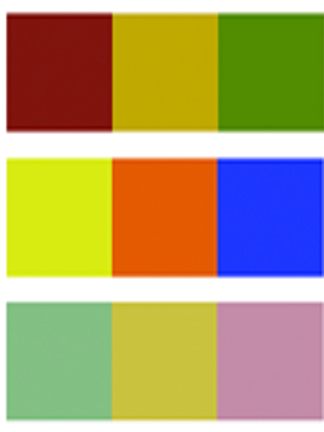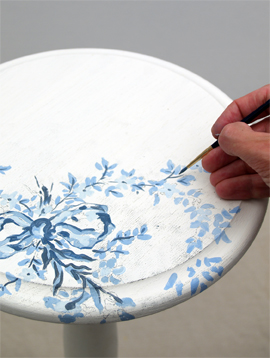How To Create an Antique Bronze Finish
Easy faux finishing. Great for metal surfaces, learn how to create this painted antique bronze finish.
Simulated bronzing effects are ideally applied over metal surfaces, or wooden objects, to create the appearance of a genuine bronze patina. Do it yourself home improvement tutorials, faux effects, decorative painting, color design, wood staining and more.
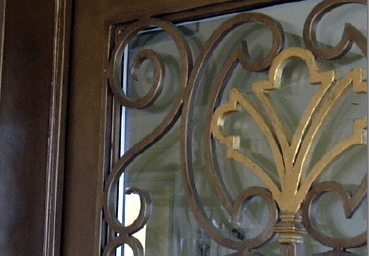
Whether on entrance doors, coffee tables, stair railings, mirror and picture frames, this decorative treatment will impart the impression of strength and hardness to old-world, or contemporary furnishings and fittings alike. This faux Bronze entrance way creates a sophisticated formal look, a solid first impression as you cross the threshold of this residence.
Rustic Style Classic Elegance
Stucco Rustico or Aged Plaster is a Traditional interior and exterior textured plaster that epitomizes the rustic old world charm commonly associated with Old World environments. Stucco Rustico is a lime based texture coating for interiors and exteriors. When coated with Velatura., it provides a natural stone look and feel. It can be tinted on its own, however, for added depth and shade, Velatura. becomes a fundamental addition to the products final effect. Overall, Stucco Rustico is a mold-proof, restoring, transpiring, disinfectant, textured stucco paste for residential and commercial use.
This treatment is quite versitile. For interior and exterior application.
Varnish Brushes
Finishing Venetian Plaster with natural polished marble effect
Varnish Brushes
Highest quality flat brushes for the application of varnishes. These brushes are made of high quality natural hairs. Square brushes allow precise application of material, excellent coverage and consistent build-up of material. These square brushes are the applicators of choice for base coats of oil paint, sealers, primers and top coats of glazes.
Step 1: Preparing the surface
This decorative technique can be created on any type of furniture or object. You can use new, un-finished furniture, an old antique, or even a painted object. Whatever the surface may be, you will first need to prime then apply a base color.
Step 2: Priming and undercoating
Where necessary, remove all nails and repair any damaged or cracked areas. Place protective drop cloths around object or furniture, and tape any areas not meant to be painted or refinished. Refer to the artSparx basic preparation resource for tips and techniques.
A good quality primer will always result in a higher quality final finish. If creating the Bronze patina over a metal surface it will be necessary to use an oil-based metal primer. Over objects, frames and furniture, water-based primers will suffice.
Step 3: Preparing the surface
This decorative technique can be created on any type of furniture or object. You can use new, un-finished furniture, an old antique, or even a painted object. Whatever the surface may be, you will first need to prime then apply a base color.
Choosing the base color
There are two options for creating the reflective base tone required to successfully simulate the faux Bronze patina. The first is created using gold paint, and the second is created over gold or imitation gold leaf.
Do not use spray gold paint! Metallic spray paints do not have a strong enough protective sealer to allow a bronze effect to work properly. Should you glaze over metallic spray paints, the brass particles suspended in the spray paint binder will flash and turn brown, resulting in loss of color and metallic reflectivity, both essential to create an effective bronze appearance.
Step 4: Applying Gold under tone
Use 'Hammerite metallic gold paint'. It is an industrial strength metallic paint, often used for radiators and metal surface. Apply with a mini roller in clean even motions when ever possible. Avoid overlap marks that create a darker seam. A smooth appearing gold surface will provide the best results.
To create a gold leaf or imitation gold leaf surface, follow the gilding tutorials at the artSparx Gilded Corner, then complete the effect with the following glazing technique for the Bronzing patina.
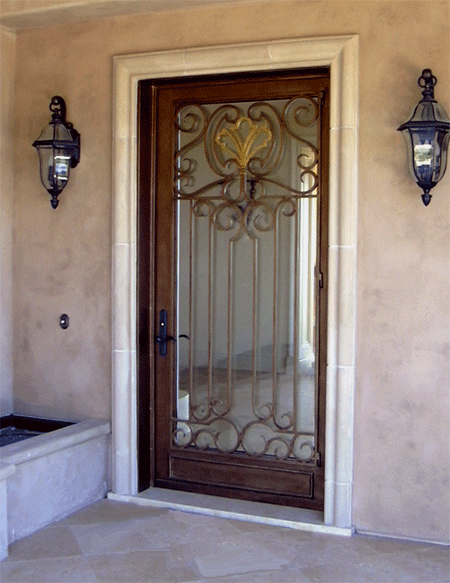
Mica Powder
Highlight your bronzing patina with these high quality mica powders.
Mica Powder. - Perfect for artists and craftsmen alike, these powders have many uses and mix with clear vehicles ranging from acrylic and oil based mediums to shellac. You control the pigment content - use very little for a translucent veil of metallic or use more for a solid metal look. Intermix colors to create your own mica palette. Ideal for 'Flash Gilding', where you apply the mica directly over size that is at perfect tack.
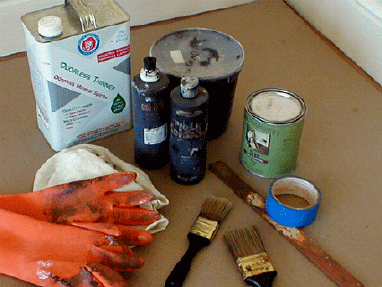
Step 5: Creating the Bronzing glaze
Mineral spirits, Raw Umber and Burnt Umber Universal Tinters, antique Bronze mica powder, satin sheen oil based varnish and clean brushes and rags are the essential ingredients.
In a 2.5 quart bucket mix satin sheen oil based varnish with your Universal Tinter colorant. Mix Raw Umber and Burnt Umber in a 4:1 proportion (RU:BU). You will need to create a strong, dark varnish glazing mixture. So 80 drops of Raw Umber and 20 drops Burnt Umber, mixed in 1 quart of oil based varnish. You may need to add more (like 100 drops RU to 25 drops Burnt Umber) so mix some up, rub on painted surface as a test, then add more tinter as needed. Add 1/4 cup mineral spirits and 1 0z. bronze mica powder. Mix thoroughly. You have now created the Bronzing glaze. Because varnish is heavier than mineral spirits, it will be necessary to continually stir the Bronze glaze mixture, occasionally adding small amounts of mineral spirits to keep the glaze fluid and preventing the glaze from becoming too thick and dark.
The Bronzing process
The bronzing patina is created by using the 'Pouncing' effect. You can find out more about this process by visiting the pouncing tutorial. You will need 2 clean brushes and a clean rag. The first brush will be used to apply the glaze, the second for creating the pounced 'Bronze' effect. For small surfaces a regular 3 inch brush will suffice to create the effect. For larger surfaces you can purchase a stipple brush or create your own.
Pounce or stipple brush: You can buy special commercially made pounce brushes. They tend to be expensive, so it is important to constantly clean these brushes during use to prolong their use and to protect your investment. To create your own, inexpensive pounce brushes, follow the simple procedure by clicking here.
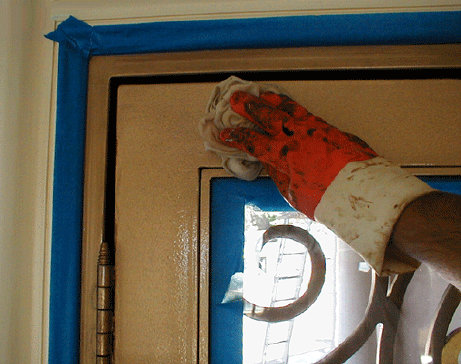
Step 6:
Wearing protective gloves, begin the Bronzing patina by wetting the surface with a rag moistened with mineral spirits. This will allow the glaze to flow easily over the surface. Do not get the area too wet, as the glaze will run and sag.
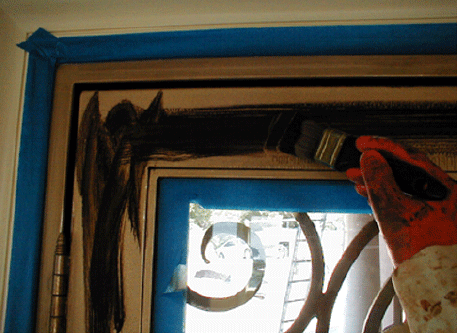
Step 7:
Using a clean brush, apply the bronzing glaze over the surface. Loosely brush over an entire segment, insuring complete coverage. Start your project from the top, or highest point, working towards the bottom. This guarantees that drips doing fall onto lower portions that have been already glazed. On large areas work in segments, progressively working from one area to the next. Wearing protective gloves, begin the Bronzing patina by wetting the surface with a rag moistened with mineral spirits. This will allow the glaze to flow easily over the surface. Do not get the area too wet, as the glaze will run and sag.
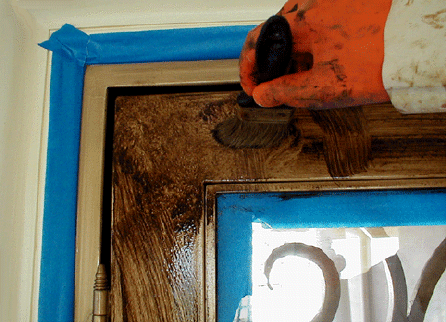
Step 8:
Using the pounce brush, begin the pounce process by hitting surface directly on with bottom of the brush, holding the brush perpendicular to the surface. Use a firm hand and continually move your wrist to vary pattern being created. This will remove the freshly applied glaze from the surface, revealing the base color and producing a spotty or sandy texture. It is best to go over the surface loosely once, then return and begin to refine the pattern with your second pass.
Regularly wipe brush dry with a clean rag to remove excess glaze and to ensure a fresh pounce pattern. Work evenly over surface.
If glaze is too fluid and continually “sags” or runs, allow to set momentarily then return and work at glaze with a dry brush until smooth. Be aware that oil-based glazes set quickly.
Retain some of the master glaze for future touch ups in a covered glass container. Dispose of remaining glazes properly.
Step 9:
Move to next area and repeat. Do not stop until entire surface has been treated. Do not put glaze on previous edge but rather apply within 1 inch or so and soften into previous edge with your pounce brush or another dry brush.
Corners and difficult edges At corners apply glaze to within ½ to 1 inch of edge and with a dry brush, work into corner, then soften, smooth and pounce with a smaller, single brush. Use light, gentle movements. Applying a protective varnish coat.
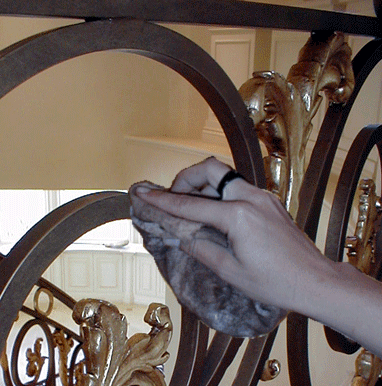
Optional
Adding the final details with bronzing waxes. We've created a Bronzing Patina on the central wrought iron stair railing. Because of all the edges and interesting curves, we set out to highlight the bronze effect by using bronzing and gilding waxes.
Once the Bronze surface is completely dry apply gold or bronze gilder's wax on the edges and corners of the surface or object. Simply dab a clean rag into the gilders wax and gently rub over the high points, or edges to create a softened, buffed metallic edge.
Finish off by accenting details and buffing high points for the truly polished and hard metallic appearance of genuine bronze.
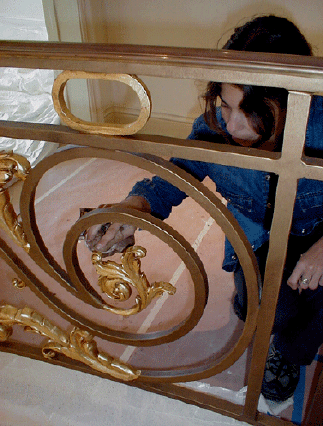
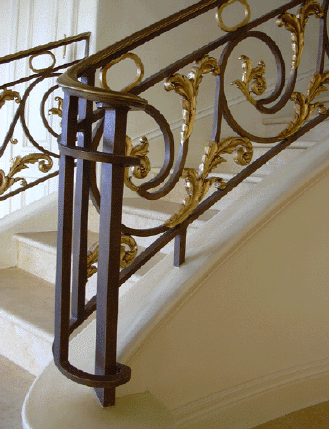
Fixing drips and spills
Important Tip - How to fix drips and spills - If wet glaze gets onto an area that has already been finished and has begun to set, it may dissolve the previous finish. Simply blot area with a dry rag to remove excess. Any attempt to repair area before completely dry may result in a mess that is virtually irreparable. Small areas are manageable. Correcting large areas may require removing all the paint and reapplying it from scratch.
Small area repair: Once completely dry (24 hrs.) fresh glaze may be touched in with an artists brush until desired results are achieved.
Large area repair: Treat before drying is complete. If a large area of glaze is affected and begins to burn away, or dissolve, the removal of the entire glazed surface may be required. To do this, dampen a rag with mineral spirits and wipe surface until clean, using multiple rags if necessary. Alternatively, you may allow wall to dry completely (24 hrs.), then repaint base coat and begin again.
Early American Style
Colonial Amercians drew inspriation from their European heritage. Curent design styles would filter across the ocean and become reinventedin early America. Proportion and scale took reign over ornementation, A neutral color palette of grey blue, greens and rose pinks is readily apparent.
Venetian Plaster
Polished Plaster, or Stucco Veneziano, is a Traditional wall treatment that provides a glossy, visually textured wall finish. Venetian Plaster is a natural formula composed of organic ingredients, calcium, and acrylic binders creating a decorative paste plaster for interior applications. Polishing the surface compresses the calcium within the compound, creating a narble-like finish, cool and hard to the touch.
This treatment is quite versitile, ranging from a rustic backdrop to a refined and elegant finish.
The Rustic Color Palette
The Rustic Style color palette falls within a distinct range of color tones and is essential in creating a successful Rustic interior. By using the appropriate color tones you can create a variety of design styles ranging from Period and Historic, regional or thematic. Color helps define our experiences within an interior and exterior environment. It affects us on a physical, emotional, and spiritual level and can be calming and passive, expressive and vital.
Painted Floral Details
Floral patterns used as accents in fabrics and furniture are common place details in the English Country home. These graceful and organic patterns complement the cozy interior of this style and work particularly well with lace window treatments, an heirloom tea service set and the natural and rustic charm of wooden ceiling beams and slightly irregularly textured walls.

